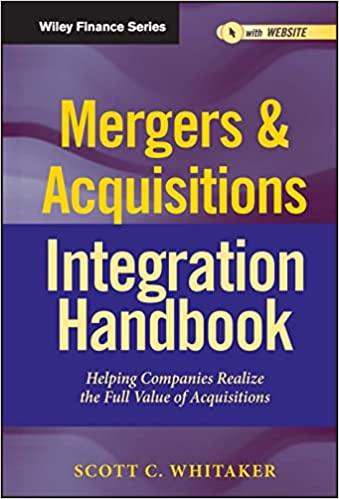Question
Write a report as though you were advising a relatively knowledgeable investor who is considering purchasing stock in your company. Your objective is to inform
Write a report as though you were advising a relatively knowledgeable investor who is considering purchasing stock in your company. Your objective is to inform the investor of those attributes of your company you believe the investor should consider in making an investment decision. Your objective is not to sell the company, so be objective.
The body of the report should contain the following sections and each section is labelled accordingly. Write out the formulas for the ratio and show your calculations and results.
1. Summary: Summarize those attributes you believe are most important to a prospective investor. Identify the major strengths and weaknesses.
2. Company Description: Identify major products and market segments.
3. Industry Attributes: Briefly describe any attributes of the industry that have a major effect on the performance of your company. For example, what factors affect demand for the company's product?
4. Liquidity: Calculate the current ratio and quick ratio.
5. Asset Management: Calculate the average collection period, inventory turnover, fixed asset turnover, and total asset turnover. Is the company capital intensive (percent of long-term assets to total assets)?
6. Financial Leverage Management: Calculate the debt ratio, times interest earned ratio, and the equity multiplier. Has the debt ratio changed much in the last 3 years?
7. Profitability: Calculate the gross profit ratio and net profit ratio. Have profits increased or decreased? Calculate the return on assets (net profit margin times the total assets turnover.) Perform a DuPont analysis (ROE=net profit margin times the total asset turnover times the equity multiplier).
8. Operating, Investing and Financing Cash Flows: Have operating, investing, and financing cash flows over the last 4 years been positive?
9. Growth: Is the company growing? Consider changes in total assets, current assets, and long-term assets. What is the dividend payout ratio?
10. Operating Cycle: What is the companys inventory conversion period, receivables conversion period, payables deferral period, and cash conversion period?
11. Stock Price: What has happened to the companys stock price over the last 3 years? What is the company's dividend? Has it changed in the last 3 years? What is the current price/earnings (P/E) ratio? What is the company's beta? What do you think has accounted for the stock price change?
12. Appendices: Balance Sheet, Income Statement, Statement of Cash flows, and 5-year Stock Price Chart.
This is for Principles of Financial Management
Step by Step Solution
There are 3 Steps involved in it
Step: 1

Get Instant Access to Expert-Tailored Solutions
See step-by-step solutions with expert insights and AI powered tools for academic success
Step: 2

Step: 3

Ace Your Homework with AI
Get the answers you need in no time with our AI-driven, step-by-step assistance
Get Started


